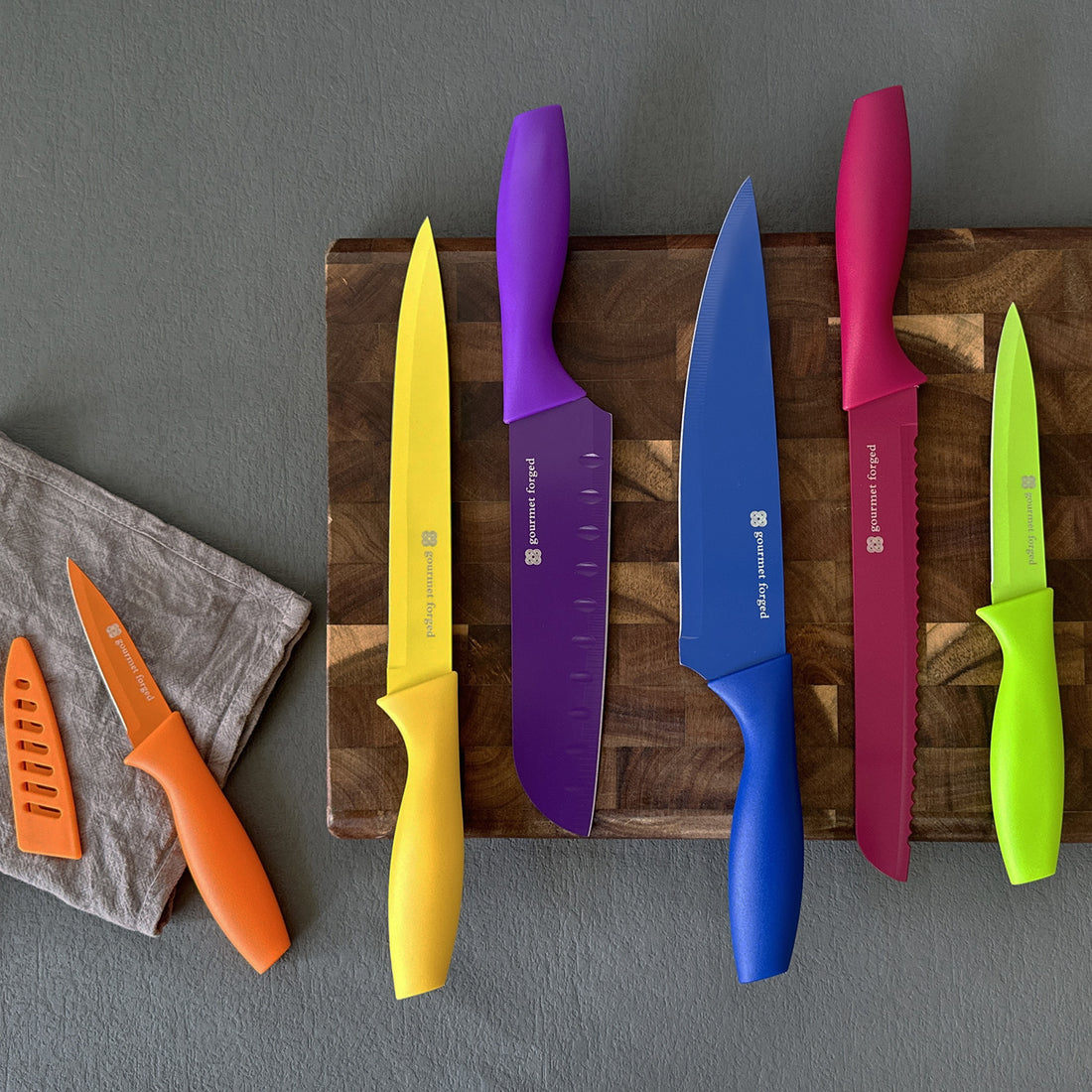Knives are the unsung heroes of the kitchen, and maintaining their sharpness is essential for both safety and precision in your culinary endeavors. In this comprehensive guide, we'll explore the art of knife care, from understanding the importance of sharp blades to practical tips on how to keep your knives razor-sharp.
Before delving into knife maintenance, it's crucial to understand why sharp knives are a game-changer in the kitchen:
Sharp knives provide exceptional control and precision when cutting, chopping, and slicing. This not only makes your tasks more efficient but also enhances the presentation of your dishes.
Ironically, sharp knives are safer to use. Dull blades require more force to cut, increasing the risk of accidents. Sharp knives effortlessly glide through ingredients, reducing the likelihood of slips and injuries.
A sharp knife can handle a variety of tasks, from delicate herb chopping to slicing through tough cuts of meat. This versatility is invaluable for both professional chefs and home cooks.
Sharp knives cause minimal damage to the cell walls of ingredients. This means less cell rupture, preserving the flavors and textures of your food.
Now that we've established the importance of sharp knives, let's dive into the practical aspects of knife care and maintenance.
Avoid cutting on hard surfaces like glass, granite, or ceramic plates, as they can quickly dull your blades. Opt for cutting boards made of wood or soft plastic. These materials are gentle on knife edges.
Resist the temptation to toss your knives into the dishwasher. The high-pressure water and harsh detergents can damage the blades and handles. Instead, hand wash your knives with mild soap and warm water, then promptly dry them to prevent rust.
Store your knives in a way that protects both the blades and your hands. Magnetic knife strips, knife blocks, and blade guards are excellent options. Avoid throwing knives into a drawer, where they can become damaged or pose a safety hazard.
Understanding the difference between honing and sharpening is fundamental to maintaining sharp knives:
-
Honing: This process involves realigning the blade's edge, not removing metal. Use a honing rod or steel before each use to keep your knife's edge in top condition. Simply swipe the blade against the honing rod at a 20-degree angle on each side several times.
-
Sharpening: Sharpening is a more intensive process that actually removes metal to create a new, sharp edge. It's necessary when honing no longer restores the blade's sharpness. Consider sharpening your knives every 6-12 months, depending on usage.
When it's time to sharpen your knives, you have several options, including whetstones, pull-through sharpeners, and electric sharpeners. Here, we'll explore the traditional whetstone method:
You'll need a sharpening stone (whetstone), a damp cloth, and a honing guide if you're new to sharpening.
If you're using a water stone, soak it in water for about 10-15 minutes before use. A lubricated stone helps prevent the blade from overheating and ensures a smoother sharpening process.
Maintaining the correct angle is essential. Most kitchen knives are sharpened at a 20-degree angle. Use a honing guide or practice your hand's angle control until you can consistently hold the blade at the desired angle.
Begin with the coarse side of the stone. Place the blade at the chosen angle and, using light pressure, move it back and forth across the stone, covering the entire length of the blade. Repeat this process on both sides of the blade until you've achieved a burr – a small raised edge along the blade.
Flip the stone to the finer side and repeat the sharpening process, this time removing the burr that was formed during the coarse sharpening. This will leave you with a finely honed, razor-sharp edge.
After sharpening, use a honing rod or steel to fine-tune the edge and remove any remaining burrs. Remember to maintain the correct angle and perform a few passes on each side.
Finally, test your knife's sharpness by gently slicing through a piece of paper or a ripe tomato. A well-sharpened knife should cut effortlessly.
Even with the right cutting board, it's important to use it properly. Avoid slamming your knife down or using excessive force. Instead, let the sharp edge do the work.
Incorporate knife maintenance into your routine. Regular honing and occasional sharpening will extend the life of your blades and ensure they are always sharp.
If you're not comfortable sharpening your knives, consider taking them to a professional sharpener. They have the expertise and equipment to restore your knives to their original sharpness.
Always treat your knives with respect. Avoid using them for tasks they aren't designed for, like prying open cans or cutting frozen food. This can cause chipping or damage to the blade.
Maintaining sharp knives is not only essential for culinary precision but also for your safety and overall cooking enjoyment. By following these knife care and sharpening tips, you'll ensure that your knives remain your trusted kitchen companions for years to come. A well-maintained blade is a chef's best friend, ready to tackle any culinary challenge with precision and finesse. So, sharpen up and let your culinary creativity flow!
